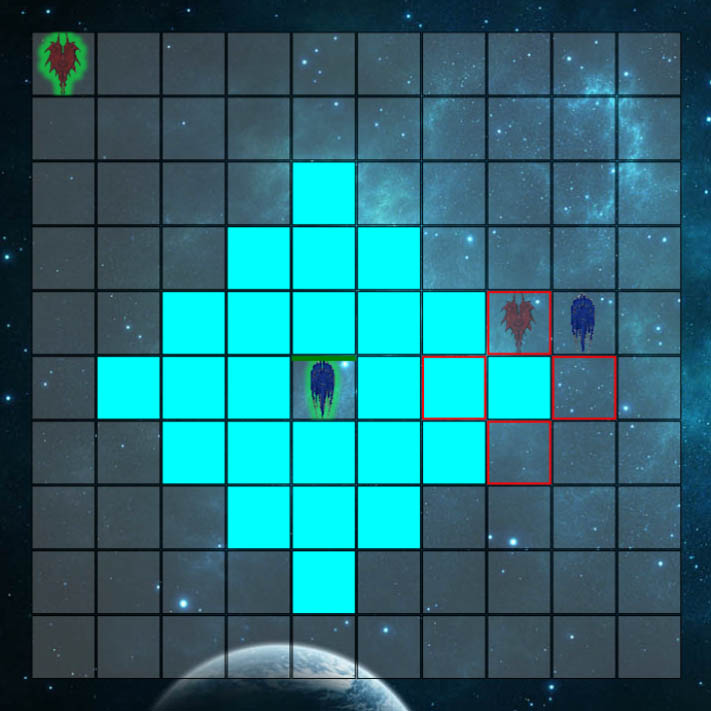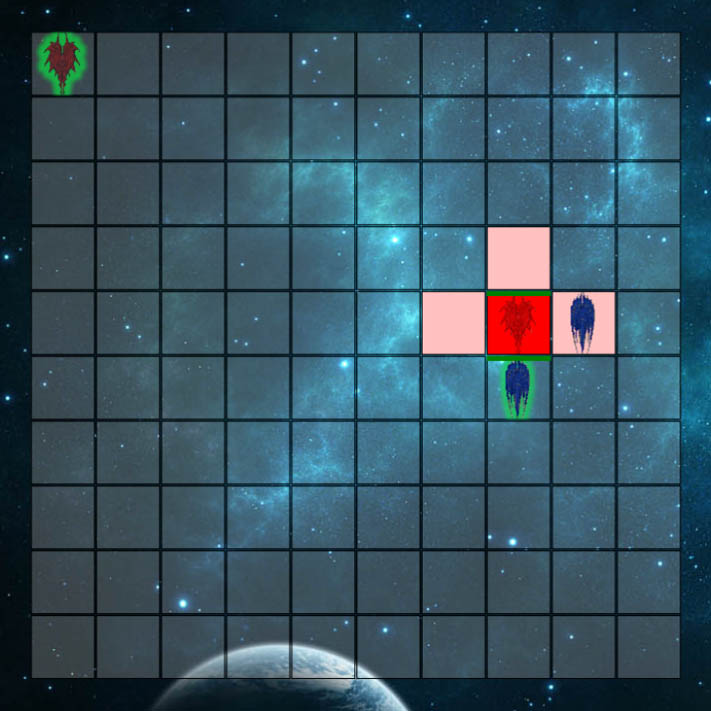Nebula Proposition is a two-player tactics game where the board repeatedly splits into parallel timelines which run simultaneously.

I designed Nebula Proposition with Jeremy Roberts for UCSC’s spring 2014 Foundations of Video Game Design class.
We were required to use GameMaker. Nebula Proposition has never been fully implemented, because GameMaker sucks. You can download a very unstable version from the University of California’s eScholarship. Please don’t read the description on that page, we wrote it really fast.
Prototype
We started with a space-themed chess variant, with a wormhole in the center of the board to add more action. The playable prototype is shown below.
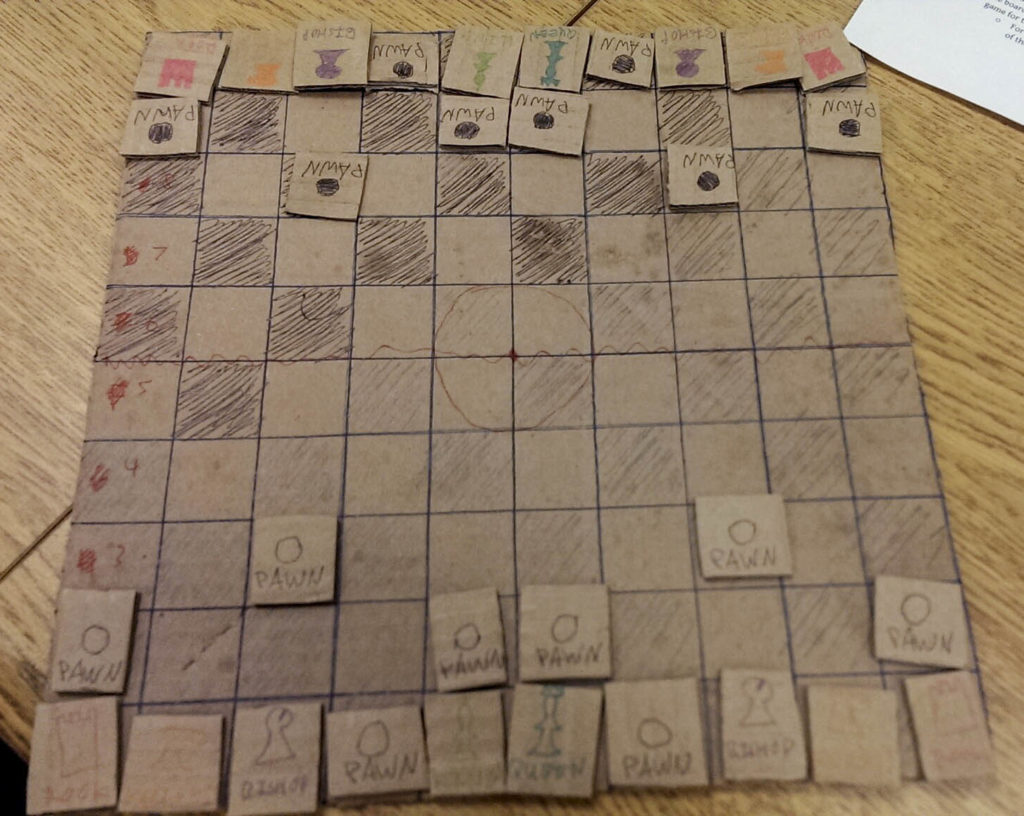
The prototype was not interesting enough and too similar to chess.
We wanted the game’s name to basically mean “space chess.” It was easy to think of ‘nebula’ for a cool-sounding space word, but we we turned to a thesaurus to include the strategy aspect in the game’s name.
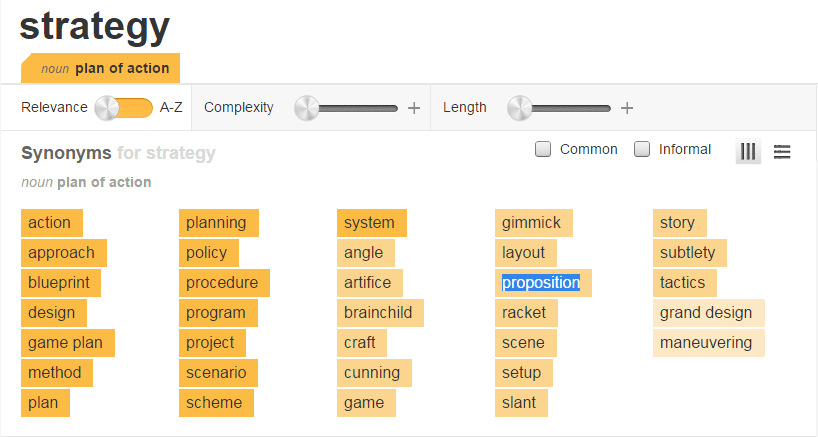
“Nebula Proposition” started as a joke because’s so long and doesn’t really describe the game. Then we decided it was cool.
Time split mechanic
The final design introduces a mechanic which allows players to explore two outcomes to a single action. This was inspired by the ninth entry in Sean Howard’s Three Hundred Mechanics, called Time Shock. Howard writes,
“So, the idea here is, basically, at certain points, two potential futures split off – one where an action worked and one where it didn’t. Then you can play both those futures.”
Time Shock is quite complex but we adapted the main idea. Howard allows anyone to use his ideas for free.
The proto-linchpin
At game start, each player designates one of theirunits a proto-linchpin. When the first proto-linchpin is killed, these three things happen:
- Proto-linchpin status is removed from both proto-linchpin units.
- The unit that killed the proto-linchpin becomes the linchpin unit (more below).
- A second timeline is created, containing a copy of the first timeline. The second timeline appears as as a second game board next to the first game board.
Proto-linchpins and linchpins are both identified with a green glow in the GameMaker implementation.
Example
The three screenshots below show how the first time split works. The game starts with only one timeline, shown on the left.
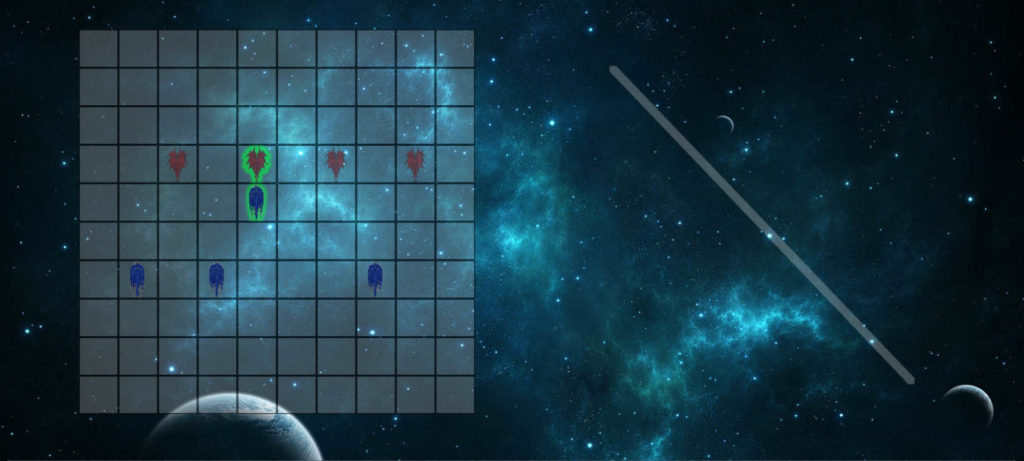
1. We start with only one timeline. Blue’s proto-lichpin is about to destroy the red proto-linchpin. 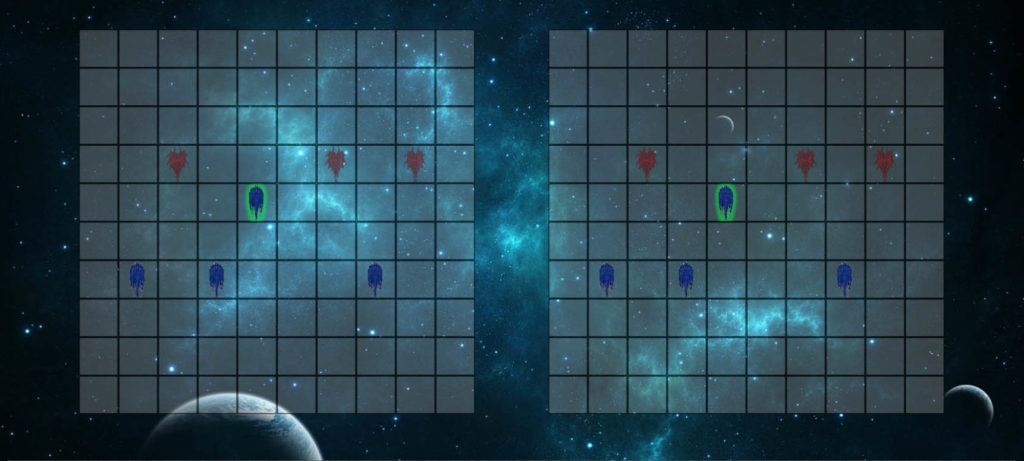
2. The timeline splits when red’s proto-linchpin is destroyed. The surviving proto-linchpin becomes the linchpin. 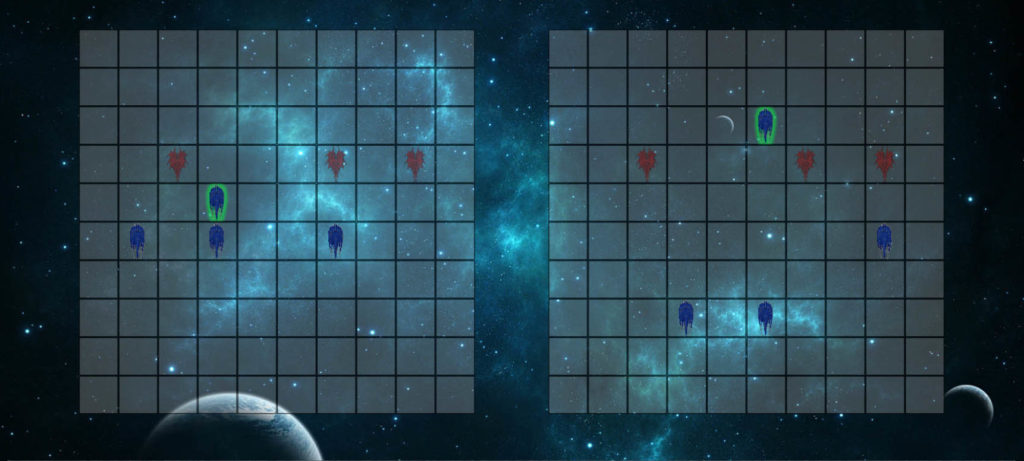
3. With two independent timelines, blue can try two different strategies at the same time.
Later splits / linchpin
Linchpin is defined as “one that serves to hold together parts or elements that exist or function as a unit.”
The fate of the linchpin determines the timelines’ splits. When the linchpin is killed, these three things happen:
- The timeline in which the death did NOT occur is discarded.
- The unit which killed the linchpin becomes the linchpin.
- The single timeline is copied to a second timeline, now both with the same linchpin.
Example
These three screenshots illustrate how the time split works with the linchpin.
Notice that red starts in a very good position in the left timeline but a very bad position on the right timeline.

1. Red is about to destroy the enemy linchpin in the good timeline (on the left), which will replace the bad timeline (on the right) with a copy of the good timeline. 
2. Red has destroyed the linchpin. The right timeline was erased and the left timeline split into two independent timelines. 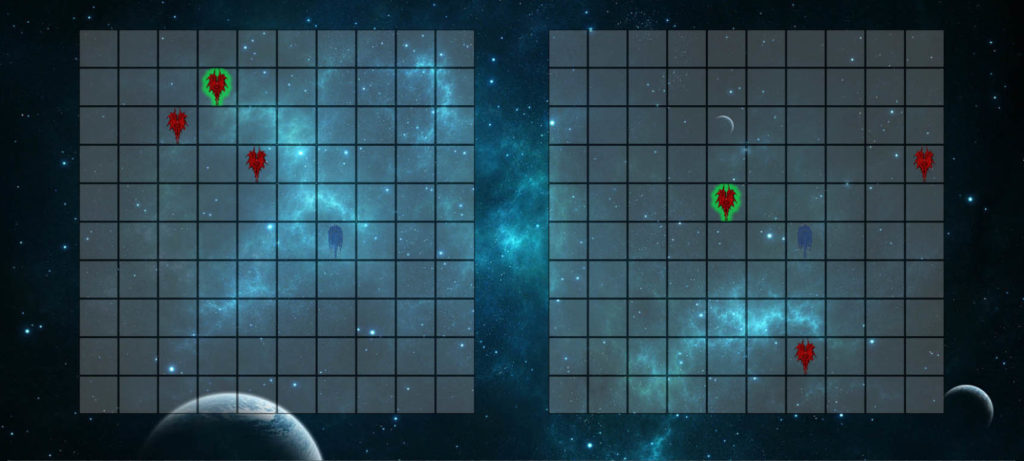
3. Now, red can try two separate strategies at the same time.
Units
Four types of units are available: the essential Bomber, the simple Gamma Fighter, the sneaky warp ship, and the powerful mothership.
Usage
At the beginning of the game, one timeline exists and a player is selected randomly to place the first unit. Then, players alternate placing units on their side of the board. Once the board has been populated with both players’ units, both players choose one unit to be their proto-linchpin (see ‘Time split mechanic’ section.)
Grid cell colors provide range and target information when moving units. Solid cyan cells are available to move into, and a red border indicates the attack range if the unit moves to the cell under the cursor. Once a destination is chosen, a solid red background indicates a valid target.
Bomber
Basic, soldier-type unit. When attacking, splash damage is also dealt to units of either player in cells adjacent to the target. The attacking unit is immune to its own splash. In the screenshots below, left to right:
- The blue bomber will move three cells to the right to attack the enemy red unit.
- Pink cells indicate the splash range. Attacking the enemy unit will also damage the friendly unit to the right of the target.
Gamma Fighter
Archer-type: long attack range, but weak health.
The Gamma Fighter is the forgotten unit. It doesn’t do anything cool and should have more movement range than the mothership. We spent most of our time working out mechanics for the other types of units.

Warp ship
The warp ship is a leaper. In the GameMaker implementation, its movement is that of a knight.
Additionally, the warp ship can move, attack, then move again in one turn. The three screenshots below, from left to right, show:
- The warp ship will move one cell right and two cells up.
The small, light cyan squares on the grid indicate where it will be able to move on the second move phase. - After moving once, warp ship attacks in the same turn.
- After attacking, warp ship can move a second time in the same turn.
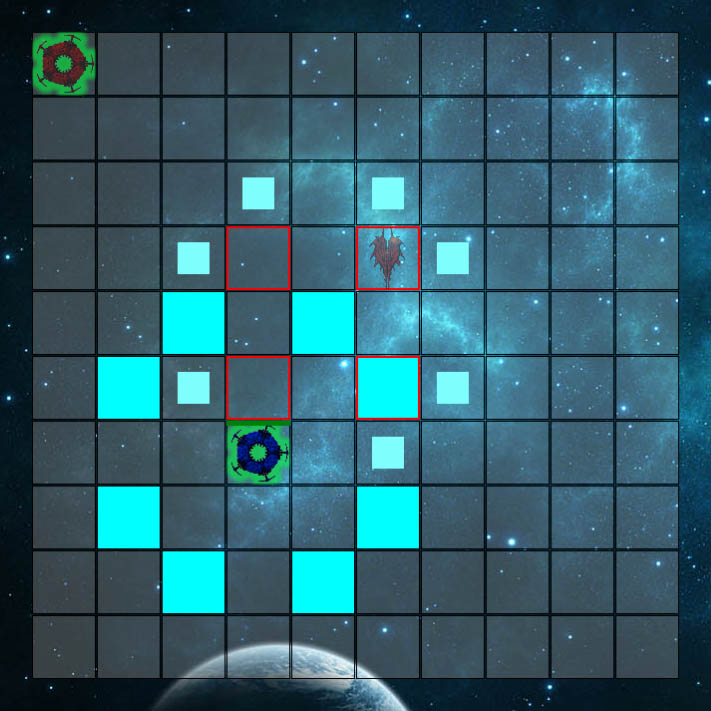
(1/3) The warp ship will move one cell right and two cells up.
The small, light cyan squares on the grid indicate where it will be able to move on the second move phase.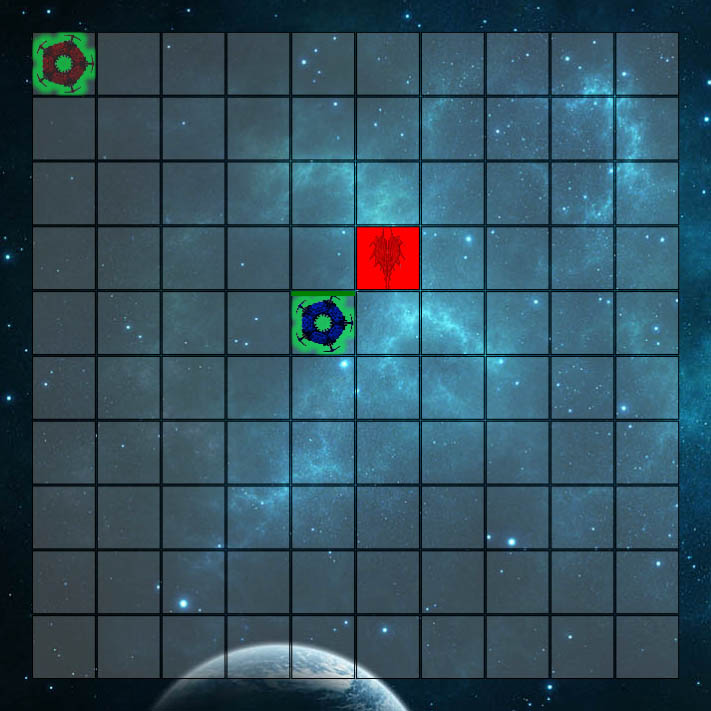
(2/3) After moving once, warp ship attacks in the same turn. 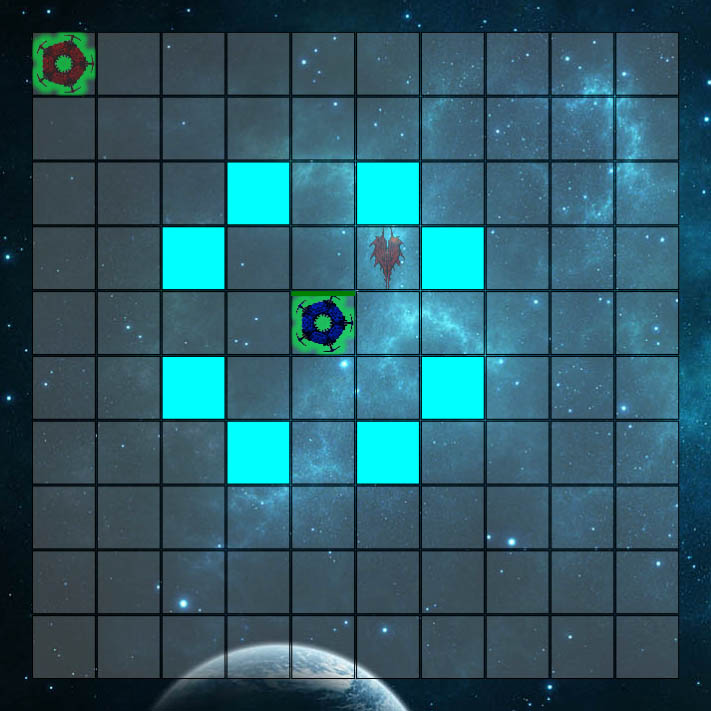
(3/3) After attacking, warp ship can move a second time in the same turn.
Mothership
Your tank-like mobile base. Only one mothership may be built per player per timeline.
The attack range has a minimum and maximum distance, so you attack in a ring instead of a circle. The mothership is also a royal piece, meaning the game ends when one is destroyed.
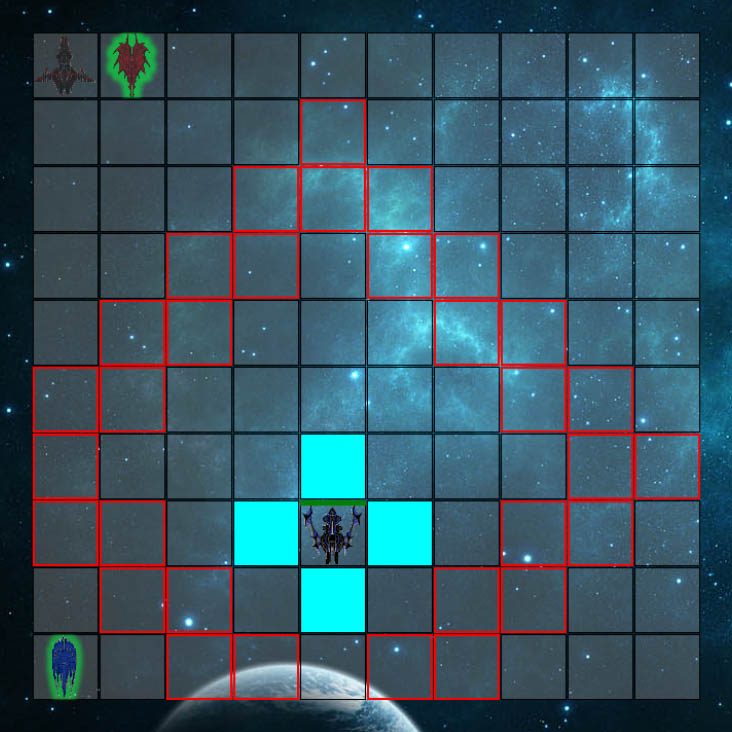
Credits
Background image is Sister Planet by Andeavenor on Wallpaper Abyss.
Music is part of Acoustic Shifter by *imp*, stretched 14.593 times by Paul’s Extreme Sound Stretch.
Most sprites are from MillionthVector’s Free Sprites page: the red soldier-type is part of 3D Styled Top-Down, the blue soldier-type is part of Faction3, and the warp ship is Space Station. The two motherships are from Spaceship Fighter Concepts.
Sprite for archer-type is 2D Spaceship parts by wubitog on OpenGameArt.org.
Fonts are Audiowide by Astigmatic and Anivers by exljbris.
Last updated May 2021
